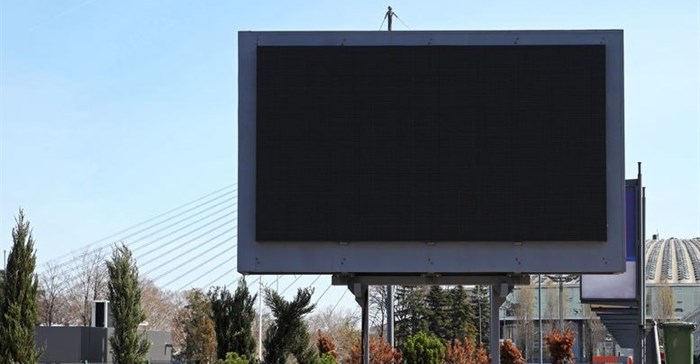Increasing urbanisation and an unrivalled ability to make the most of digital and social innovation bring out of home advertising back to the top.
Out of home (OOH) advertising – which targets consumers while travelling, shopping or otherwise engaged away from home – is one of the oldest known forms of advertising. Having come full circle, out of home is poised to once again become the medium for mass communication.
Two main factors are driving this development:
1. OOH reaches more people, thanks to increasing urbanisation
By the end of 2016, it is estimated that two-thirds of South Africans will live in cities. This leads to greater mobility, more on-the-go audiences. OOH thus offers a constant presence for a brand, a way to stay connected to consumers when they are on the move and are not (or should not be) online.
Consumers are in a different frame of mind when away from home or office, and near the point of sale. This is when people commonly make buying decisions – and out of home advertising ensures that potential consumers have a particular brand top of mind. As the IAB’s Jessica Ramirez, writing on ‘Top 5 Trends for Digital Out of Home’, notes, “a recent study by YuMe and IPG Media Lab found that consumers are 41% more receptive to advertising in public places than at home”.
2. OOH’s success at integrating with digital technology is unrivalled by other traditional media
Along with increasing urbanisation, a second crucial factor driving OOH’s renaissance is that of all traditional media types, it is by far the most successful at integrating with digital, social and innovative technologies. Figures for advertising revenue growth across OOH, TV, radio, and newspapers (from PriceWaterhouseCoopers’ Global Entertainment and Media Outlook 2015-2019), put OOH in the lead. The study also notes that ‘by converting panels to digital, providers can vastly increase their revenue by displaying multiple ads of higher quality in the same space. This process will drive an impressive CAGR of 13.2% in DOOH advertising revenue’.
Many bulletins and posters are now digital and interactive, displaying real-time web, social, and mobile messaging. Street-level kiosks, bus shelters, and shopping mall displays are often video monitors and interactive touch screens. Smartphones have become the mobile link to OOH search, social media, downloads and transactions, and can even act as credit cards. And emerging technologies like location-specific targeting and augmented reality are beginning to transform the opportunities OOH advertising provides.
In addition, social and digital media can leverage OOH to increase their reach. While outdoor advertising benefits from the social relevance and engagement offered by social media, the latter in turn gains from the large audience appeal and massive viewership provided by outdoor advertising. Adding billboards to other media can potentially increase reach by up to 300% (Posterscope USA, 2013). Various social media platforms can be included into the creative design of the many out of home formats available, and so reach consumers multiple times throughout their day.
With the growing use of social media as a free way for brands to interact with consumers, out of home advertising can be a strategic media choice and a valuable seeding tool.
Online strategies are amplified by using OOH methods
Several online strategies can be amplified through the addition of out of home methods. To begin with, it can be used to drive website traffic: About 3 out of 10 consumers have searched online after seeing an OOH ad, a number that appears to be growing: Exterion Media’s Activating Europe 2013, a pan European research study, found that while 30% of people reported going online in response to seeing out of home media in 2011, this figure was up to 32% in 2012.
Similarly, OOH can be used to increase social media engagement. According to BrandRepublic’s Wallblog, a recent study by Kinetic Worldwide and Exterion Media found that of 1,200 social media users, “39% have previously shared OOH content on social media and a further 71% would be willing to, but only if it appealed to them personally”.
Including social media specific ‘language’ can steer attention to a campaign and gain trending status. Incorporating the ubiquitous hashtag, which serves as a global connector across social media, can drive conversation, harness public support, and garner attention to brands, as can the addition of the logo of a social media site, a URL, or “Find us on Facebook” to a display’s text. (In January 2016, ROi Africa saw social media dominated by #ZumaMustFall, the largest story by over 50% following the brief installation of the controversial Cape Town billboard. Gareth Cliff, #Proteas and #PennySparrow came in second, third and fourth place respectively.)
Out of home can also serve as a public venue for user-generated content to increase social engagement, both on and off-line. For example, Coca-Cola’s 2015 “Share a Coke with Times Square” campaign allowed viewers to tweet their names to a digital billboard in Times Square, and see fun facts about the name appear (“Laurens sure steal the limelight. They starred in 723 movies since 1936”). A webcam then snapped a photo of the result, and sent this back to the tweeter’s phone.
Finally, by incorporating a call to action in the creative of an out-of-home campaign, it is possible to drive website traffic and online search behaviours. 1 in 7 search queries is on a mobile device, and 60% of mobile searches are location specific. (According to a Posterscope USA OOH consumer survey, 23% of 18-34s search while on the street; 26% search while travelling on a bus/train/car; and 26% shop while on their mobile). Similarly, OOH can drive online purchases (74% of those who saw the OOH campaign for an online takeaway brand ordered food from the website, according to Exterion Media, 2014.)
In short - ongoing urbanisation, along with out of home’s success at integrating with innovative technology suggest that, at a time where most other mediums are struggling to integrate digital and are experiencing exceptional fragmentation, OOH is poised to become “the new black”.
OOH’s advertising revenue growth is outperforming other traditional advertising media
The claim that OOH is “the new black”, is backed up by further information from PWC’s Global Media and Information Outlook, which notes that total global OOH advertising revenue stood at US$36.32bn in 2014 and is set to grow at a 4.6% CAGR to reach US$45.37bn in 2019.
Similarly, the South African OOH market is growing at a steady pace, with PWC noting that a CAGR of 3.5% will result in South Africa becoming the 16th largest OOH market worldwide, reaching R5.1 billion by 2019. Digital OOH revenues in the country are set to grow by 20.3% and account for 31% of the South African market by 2018. PWC also estimate that DOOH will generate approximately R1.7 billion or 33.2% of revenue, making South Africa the most digitised market on the continent and amongst the top 30 in the world.
OOH is, once again, the medium of choice, because it drives online and digital engagement, as is evidenced in global trends. It also reaches an ever expanding audience, thanks to urbanisation. The writing is on the wall, or rather, it’s on a digital billboard – something that you should expect to see many more of, in future.

















































